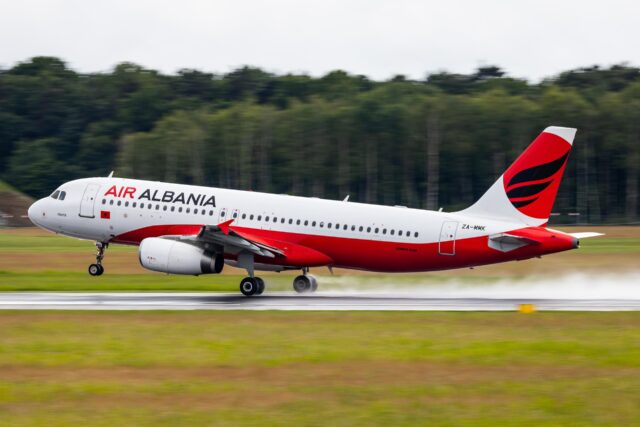From sea to sky in seconds: REGENT Viceroy Seaglider in spotlight at Dubai Airshow

November 19, 2025
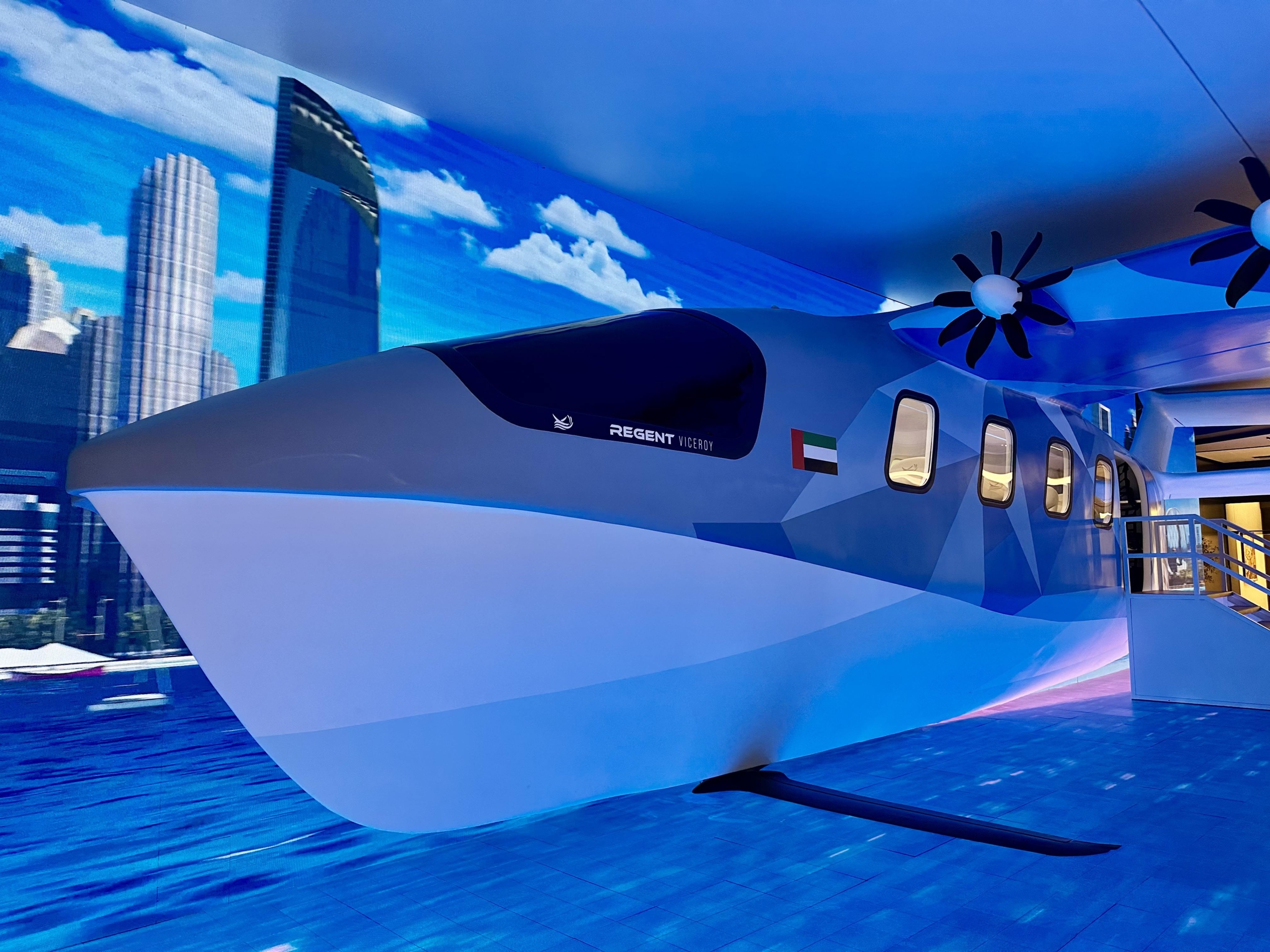
A full-size Viceroy Seaglider is turning heads at the Dubai Airshow this week. The vessel on display looks like neither a conventional ship nor an aeroplane, and that is the point.
Built by Rhode Island start-up REGENT, the Seaglider is a new class of craft that moves on water, lifts cleanly on hydrofoils and can fly in ground effect a few dozen feet above the sea.
The Seaglider is classified as a marine vessel, not an aircraft
For an aviation-minded audience, it is important to stress at the outset: this is a marine vehicle that borrows airborne speed and efficiency, yet is regulated and piloted as a boat.
REGENT’s presence at the show, alongside partners from the region, is no publicity stunt. The company has been testing full-scale prototypes in US waters this year and has begun demonstrations with military and energy-sector partners that underscore practical uses beyond novelty.
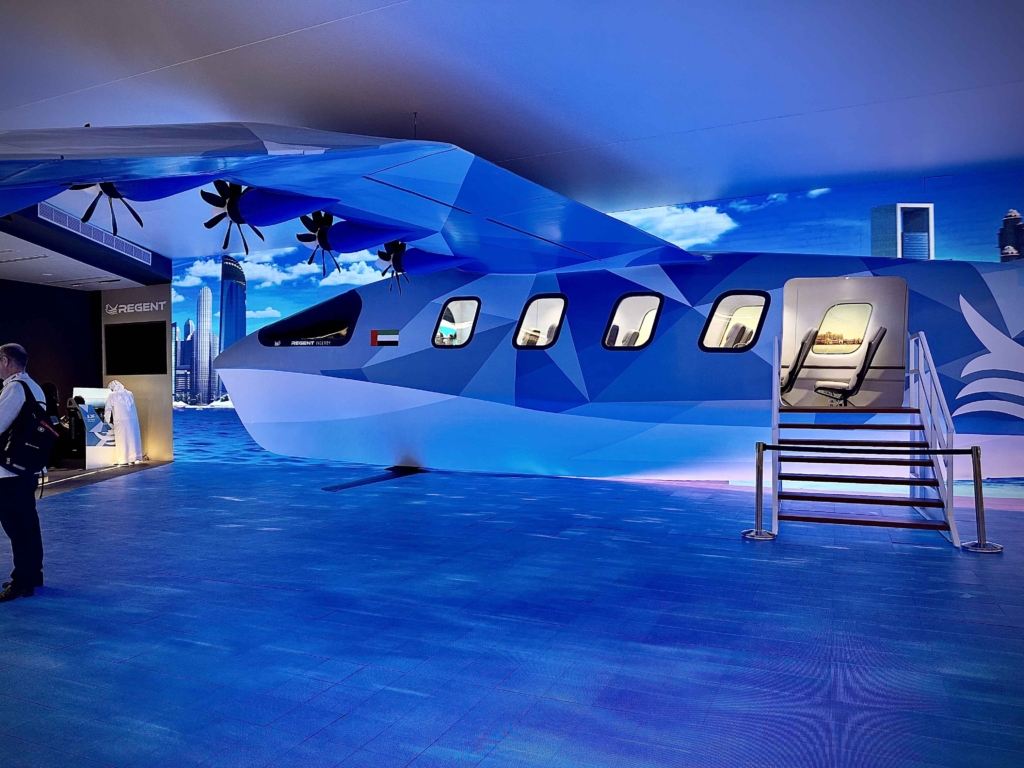
In short, the Seaglider is being offered as a real-world tool for passenger ferrying, offshore logistics and rescue missions, not as a museum piece or a one-off stunt.
A rescue platform that can close the gap between boats and helicopters
Early this month, REGENT completed a series of rescue demonstrations with the US Marine Corps that read like a checklist of the hardest things to do at sea: litter boarding of a non-ambulatory casualty, extracting an injured person from a beach, and recovering survivors from an open-water life raft.
In each scenario, the Seaglider proved able to arrive quickly, manoeuvre alongside survivors and lift them away for faster transfer to medical care.
The demonstration makes the craft’s niche very clear – where surface craft are too slow and helicopters are unavailable, unstable or costly, a Seaglider aims to sit in the middle: faster than a boat, more persistent than a rotorcraft.

Operationally, that is possible because the vessel has three distinct modes. It can simply float on its hull like any conventional boat; it can lift onto hydrofoils and skim the waves with reduced drag; and in its fastest mode, it operates in wing-in-ground (WIG) effect, a cushion of compressed air under the wings that permits efficient, high-speed travel a small distance above the sea.
Transitioning between those modes allows crews to approach crowded harbours and rough shorelines with the safety and low-speed handling of a boat, then accelerate into foiling and short bursts of ground-effect flight for long-distance hops.
How REGENT’s Seaglider succeeds where older WIG concepts failed
Seagliders are often compared, rightly or wrongly, to the Soviet-era ekranoplans, curious hybrids that excited engineers in the 1960s and 1970s. The difference is practical and technological.
Early WIG designs were notoriously fragile in anything but placid seas, hard to steer near other traffic, and demanding on pilots.
REGENT’s approach pairs hydrofoils for wave tolerance with modern, triple-redundant digital control systems that handle the fine aerodynamic balance required in ground-effect flight.
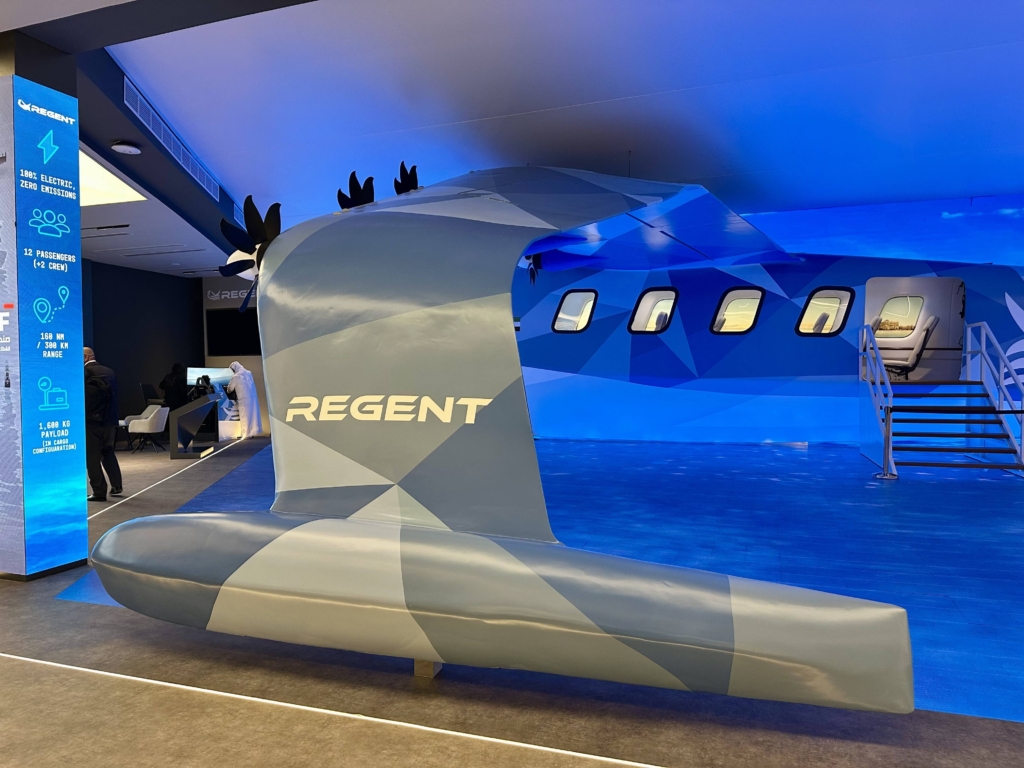
In short, the heavy human workload and poor sea-handling that held back ekranoplans have been addressed with automated controls and a foiling intermediate mode that eases transitions in real conditions.
That is not academic theory. REGENT’s prototype trials, including recent crewed foil-mode tests and staged rescues, are the company’s way of proving that their design can be dispatched reliably in the kinds of weather and traffic common to littoral zones.
For governments and operators, that practical demonstration matters far more than evocative comparisons with Cold War oddities.
Performance, payload and passenger capacity of the Viceroy Seaglider
The Viceroy Seaglider on show is a 12-passenger vessel with a 65-ft wingspan and a 55-ft hull. In hybrid form, it is designed to cruise at the kind of speeds usually associated with small aircraft – upwards of 150 knots in some configurations – while carrying roughly 3,500 lb of payload and covering hundreds of nautical miles.
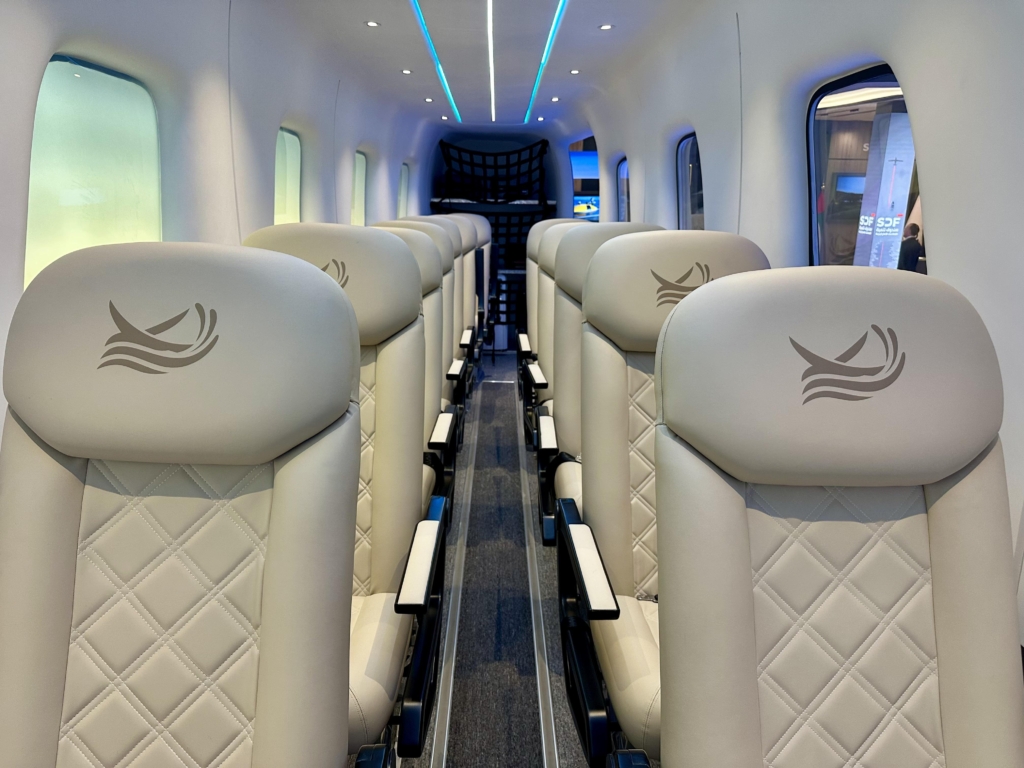
Interior layouts are spacious and configurable, and can be reconfigured for stretchers and medical equipment one day, switch to passenger comfort or cargo modules the next.
That versatility is central to the pitch REGENT is making – that seagliders can be ferries, logistics feeders to offshore platforms, or rapid MEDEVAC platforms in one programme.
Regulatory progress, partnerships and factory plans
REGENT has worked hard to make Seaglider a defensible product in regulatory terms.
The craft are classed as maritime vessels and captained by certified mariners; the company has pursued maritime certification and coastguard safety approvals rather than civil aviation certification. That path allows quicker commercial entry while aligning with how the vehicles will primarily be used on water, within maritime law.
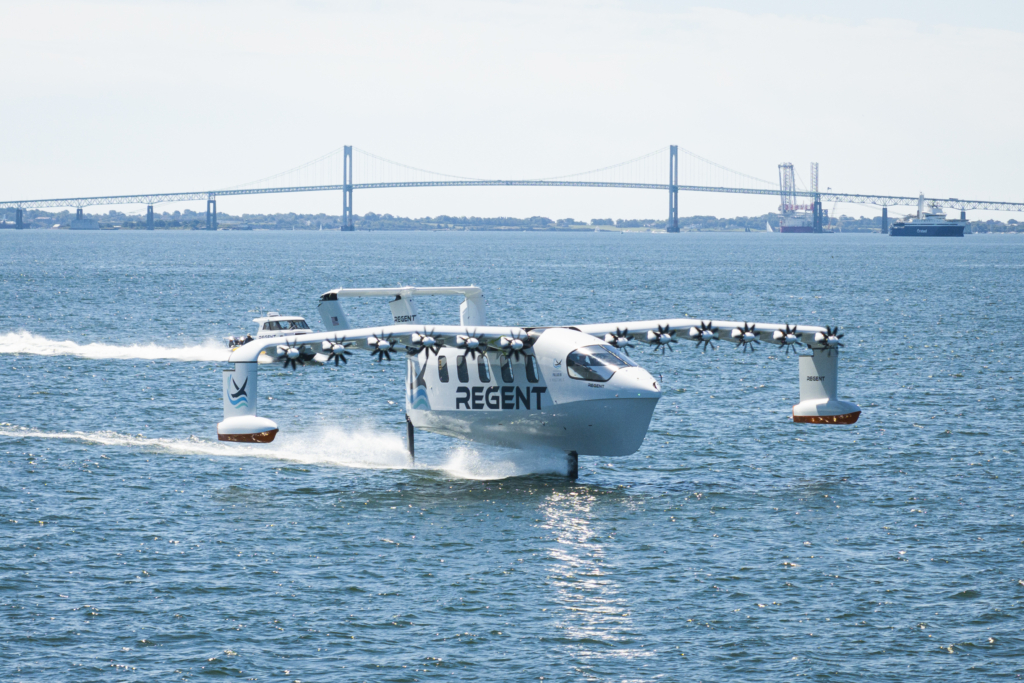
On the commercial front, REGENT has been pursuing a two-track approach: partnerships in the Middle East and rolling trials with defence customers. Joint ventures and memoranda of understanding with Gulf organisations have been announced to establish local manufacturing, maintenance and training capacity.
The company is also building a manufacturing campus in Rhode Island and says it has secured large pre-orders across multiple continents.
For markets such as the UAE, where short maritime hops and offshore servicing are commercially important, the Seaglider’s combination of speed and sea-capable handling is an attractive proposition.
What Seaglider technology offers energy, transport and defence operators
For an offshore energy company, a Seaglider could replace slow crewboats on medium-distance transfers and reduce reliance on helicopters.
For coastal transport authorities, the craft promises to unlock new routes between islands and mainland terminals at a lower energy cost than conventional aircraft.
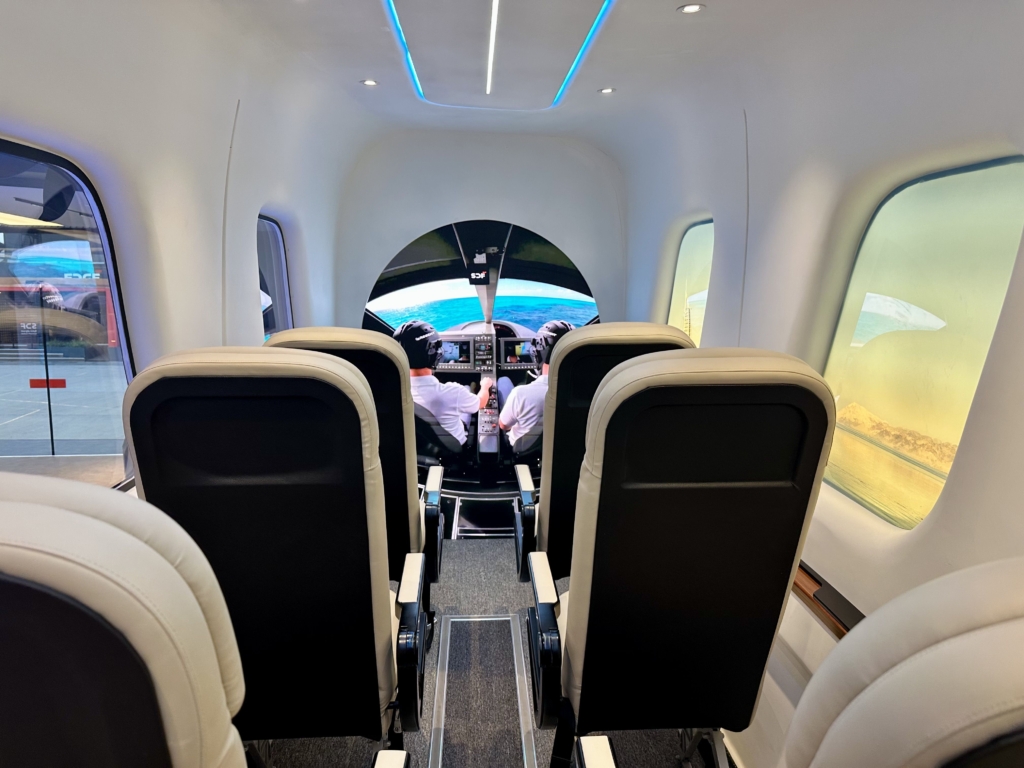
or military and emergency services, it offers a durable response option that is less weather-limited than classic wing-in-ground designs and far more economical to operate than rotary-wing aircraft over repeated missions.
Questions that remain in play
No pioneering vehicle is without caveats. Regulators will take time to establish safe corridors for ground-effect operations near busy shipping lanes; local port authorities must determine how seagliders mix with everyday maritime traffic; and commercial buyers will want to see long-term maintenance data and a predictable spare-parts ecosystem.
REGENT’s approach with hydrofoils, automated flight control, and maritime classification aims to lower those barriers, but operational scale and regulatory harmonisation will be the decisive next steps.
A different kind of transport story
Seen from an aviation desk, the Seaglider raises intriguing questions. It sits at the intersection of aerodynamics, naval architecture and autonomy, and it asks operators to reimagine coastal mobility.
Whether it becomes a common sight on ferry schedules and offshore manifests will depend on how quickly operators accept a craft that behaves partly like a boat and partly like a plane, and how soon regulators can slot it into existing safety frameworks.
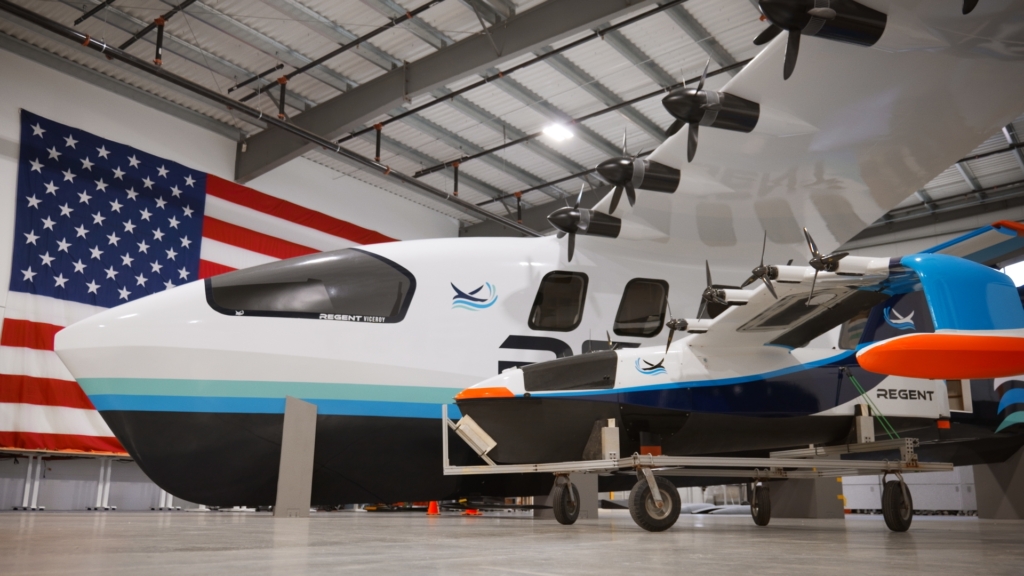
For now, the full-scale Viceroy at the Dubai Airshow is both a statement of intent and a tangible demonstration.
The model invites us to picture a coast where trips that once took hours by road or multiple changes by ferry can be done swiftly, cleanly and with a different footprint on fuel and time. That is an idea with wide appeal in a region built around short sea hops, busy waterways and a premium on speed.
Whether it will reshape transport in practice is the next and more interesting question, and one that the industry will watch closely over the months of live trials and early commercial deployments.
Featured image: Joanna Bailey / AGN

